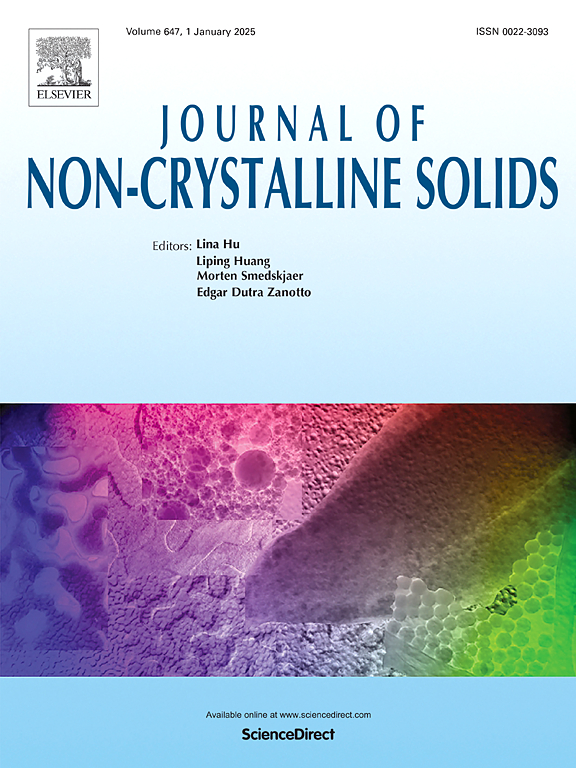Effects of fluid inclusions in quartz sand on fused silica crucible
IF 3.5
3区 材料科学
Q1 MATERIALS SCIENCE, CERAMICS
引用次数: 0
Abstract
High-purity quartz sands are used to manufacture the fused silica crucibles. However, their influences on gas bubble evolution and cristobalite formation in fused silica crucibles in the Czochralski silicon (Cz-Si) growth process remain unclear. In this work, we propose a method to precisely define and quantitively analyze the fluid inclusion contents of quartz sands through the processing of optical microscope images of quartz sands. Based on it, the gas bubble evolution of two different fused silica crucibles made from two batches of quartz sands are investigated after vacuum annealing treatment for simulating the Cz process. Quantitively analysis shows that higher fluid inclusion contents lead to higher initial gas bubble density, which can further influence the gas bubble evolution during vacuum annealing. In addition, the corresponding analysis on cristobalite formation behavior shows that the fused silica crucibles made of quartz sand with higher alkali metal concentrations are proved to be more prone to the formation of cristobalite during vacuum annealing, although the total concentration is only ∼16 ppm. These results can contribute to the purification and selection of high-purity quartz sands, in particular, special attention should be paid to the further removal of Li, Na and K elements, which helps to improve the high-temperature stability and lifetime of fused silica crucibles.
石英砂中流体包裹体对熔融石英坩埚的影响
高纯度石英砂用于生产熔融石英坩埚。然而,它们对直克拉尔斯基硅(Cz-Si)生长过程中熔融石英坩埚中气泡演化和方石英形成的影响尚不清楚。本文通过对石英砂光学显微镜图像的处理,提出了一种精确定义和定量分析石英砂流体包裹体含量的方法。在此基础上,研究了由两批石英砂制成的两种不同熔融石英坩埚在模拟Cz过程的真空退火处理后的气泡演化。定量分析表明,流体包裹体含量越高,初始气泡密度越高,进而影响真空退火过程中气泡的演化。此外,对方石英形成行为的分析表明,在真空退火过程中,由碱金属浓度较高的石英砂制成的熔融石英坩埚更容易形成方石英,尽管总浓度仅为~ 16 ppm。这些结果可以为高纯度石英砂的提纯和选择提供参考,特别是应特别注意进一步去除Li、Na和K元素,这有助于提高熔融石英坩埚的高温稳定性和寿命。
本文章由计算机程序翻译,如有差异,请以英文原文为准。
求助全文
约1分钟内获得全文
求助全文
来源期刊

Journal of Non-crystalline Solids
工程技术-材料科学:硅酸盐
CiteScore
6.50
自引率
11.40%
发文量
576
审稿时长
35 days
期刊介绍:
The Journal of Non-Crystalline Solids publishes review articles, research papers, and Letters to the Editor on amorphous and glassy materials, including inorganic, organic, polymeric, hybrid and metallic systems. Papers on partially glassy materials, such as glass-ceramics and glass-matrix composites, and papers involving the liquid state are also included in so far as the properties of the liquid are relevant for the formation of the solid.
In all cases the papers must demonstrate both novelty and importance to the field, by way of significant advances in understanding or application of non-crystalline solids; in the case of Letters, a compelling case must also be made for expedited handling.
 求助内容:
求助内容: 应助结果提醒方式:
应助结果提醒方式:


